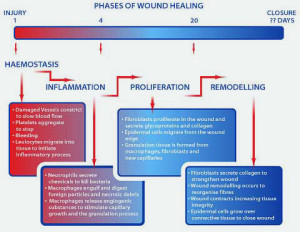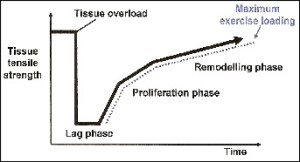Question Answered About Back Pain
“Why do I need to come back for low back pain?”
Recently I was working with a patient from Waukee and a common question came up. The question however threw me for a loop not because it isn’t something that I haven’t explained often but from who it came from. See this person is a local medical professional. This means that this person spent years studying human physiology and yet somehow forgot to apply it to themselves. The question was a simple one, yet to this person at this time he wanted to skip what he already knew to be true. He fell into that trap that all medical professionals, chiropractors or anybody else who works on the human body for a living does from time to time. Just because he has some special insight into how the body works he can skip all the stuff that a regular ‘uneducated’ patient has to do. The question was simple.
“Why do I need to come back?”
Let’s put this question into perspective. First of all, the injury was what is called uncomplicated low back pain. What this means is there is no neural or disc injury. It is also called mechanical low back pain that was caused by golfing. Happens all the time across the country every day. Secondly, this was the third time I had treated the patient. When he came in he could not straighten up and rated his pain at or near severe with the extension of the low back. Thirdly, by the time the question came up he was at a mild rating for pain, standing straight, and had 85% of his range of motion back. This patient sits almost all day in a contorted bent-over posture to take care of people. But his pain is mild. Waukee is an old farming community, mild pain is an everyday way of life. That is why you still see old farmers bent over shuffling into the local coffee shop at 5 a.m. (they have been up since 3 a.m. due to lack of sleep due to pain and stiffness).
So we have a patient who does not have a full spinal range of motion, who sits all day and has shortened hip extension and mid and upper back stiffness (it happens with prolonged sitting). He still has mild pain 50% of the day but is better than the first day he came in to see me and it has been approximately a week since he first came in:
First: Pain is an indicator that there is still tissue damage going on. Things are not working smoothly and it causes pain.
Second: We are what we do often. You don’t build muscles 3 visits to the gym. You cannot retrain muscles, ligaments, and tendons to change in 3 visits. Yeah, most of the pain is gone…now. What happens when he goes back to work? In sports injury, the last thing you want to do is put someone back in the game after a hamstring is partially healed. You are looking at a much worse injury the second time because you gave your body just enough time to put a patch on the injury.
Third: This person is not going to change his work. He cannot. So as a follow-up to the above answer since we are not changing what he is doing every day we better treat him more often to combat the damage he is doing every day at work just doing his job. We give home stretches and exercises to help with this but 4 minutes of stretching is no match for 8-hour workdays.
Four: Healing takes time. The acute phase alone lasts 72 hours (inflammation, swelling); pain usually starts to subside here. After that, you have the repair phase which lasts up to 6 weeks after the injury (unorganized collagen is laid down which is not very strong). After that, you have the remodel phase which is from 3 weeks post-injury to up to 2 years (depending on the extent of the injury) where your body makes the new repair tissue stronger and tries to make it closely match the original injured tissue.


So we still have some pain, we are a week out from the original injury with weak repairs started and we still are not able to move through our complete range of motion yet our patient who knows all of this needed a helpful reminder of what is required to heal from an injury.
The chiropractic care, soft tissue care, and exercises and stretches we do at our clinic are all designed to help out each phase of healing. In the acute stage, we want to quickly remove the dysfunction that is causing injury to get to the subacute phase as quickly as possible. The adjustment does that by restoring range of motion and removing some of the swellings that it irritating the joint capsule and the nerves reducing pain. During the subacute phase, we are actually trying to jump-start the remodeling phase. The adjustment and soft tissue manipulation ‘stresses’ the collagen fibers to start getting stronger by providing stimulus to do so. We are often working against years of poor body mechanics so we usually are constantly fighting the loss of range of motion due to work activities and cannot expect to fix that in 3 visits. I recommended a conservative treatment plan and let him know that “Hey, we can get you out of pain quickly but if you want to ‘fix’ this then follow-up visits are needed and you may not be in a lot of pain but that is okay.”
After going over the above four points our patient from Waukee had a light bulb go off in his head and the connection was made. He remarked a simple ‘Duh.’ We had a good laugh about it because we sometimes forget about the healing process when we hurt ourselves because we are human and want everything to get fixed quickly. Once the pain is gone then so is the perception of a problem, even though we know that is not always the case.


